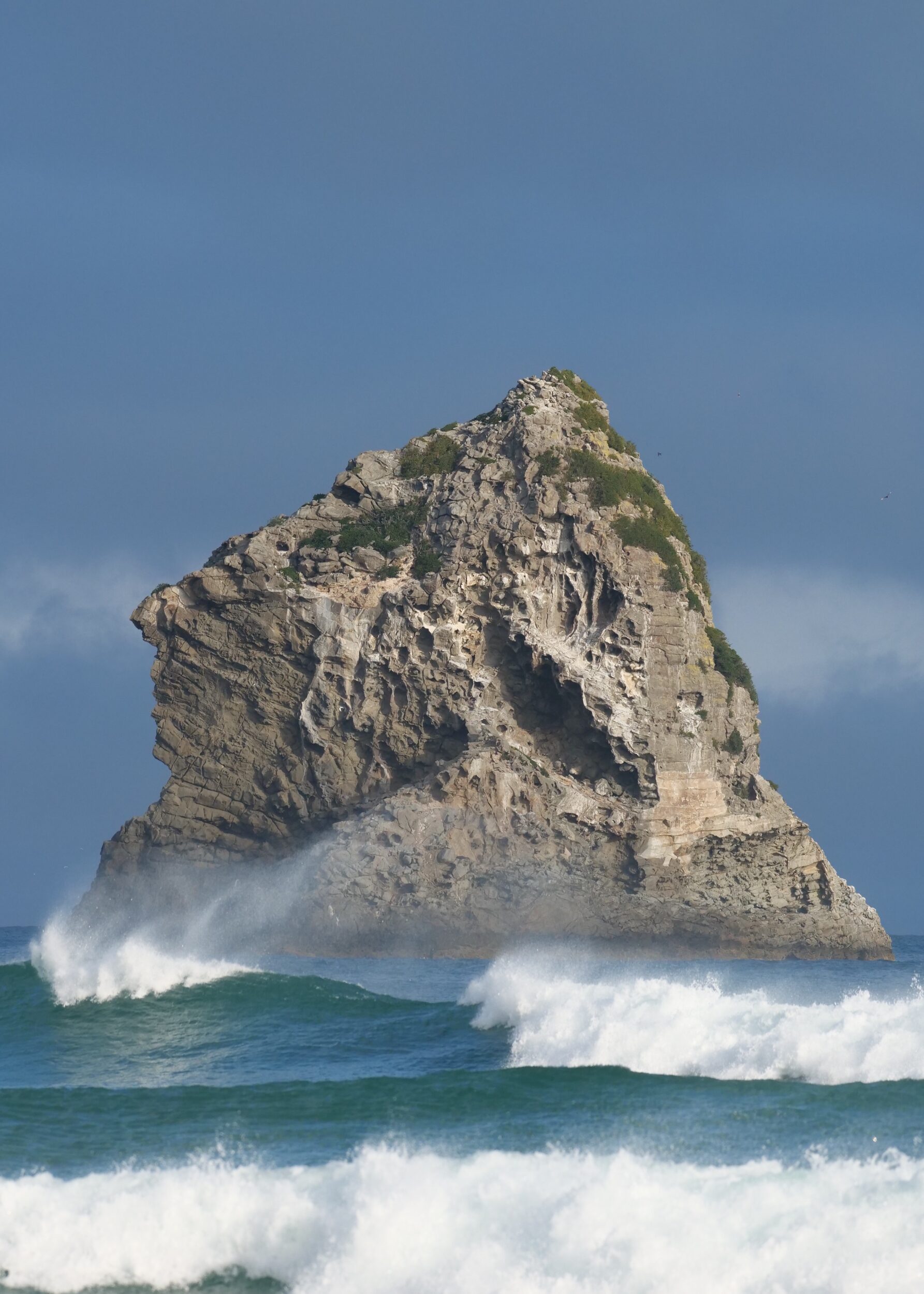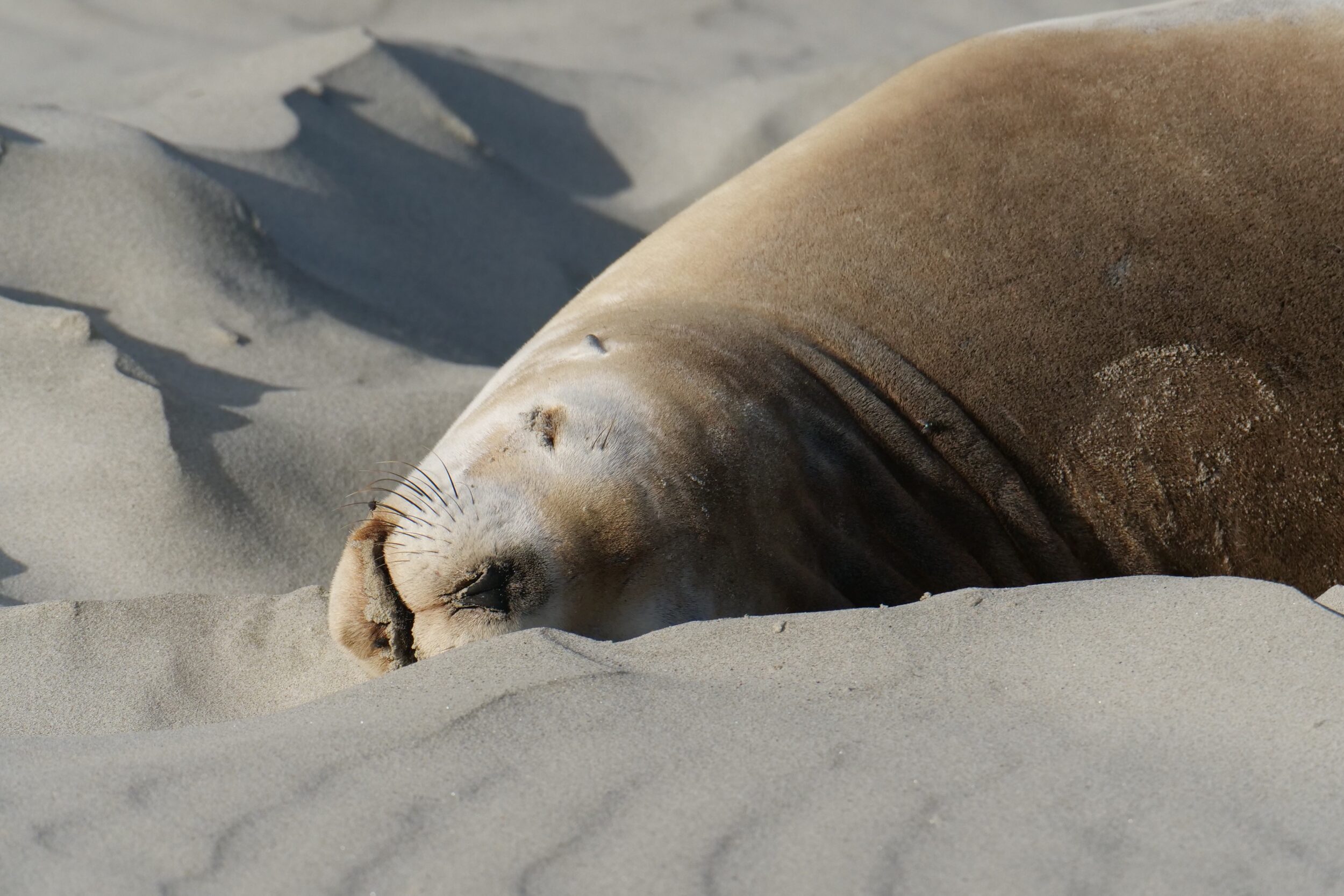Sandfly Bay is also seal-approved – one species of fur seal does like to slumber there – but the pictured individual belongs to a much rarer species, of sea lion.
New Zealand’s sandflies are deservedly infamous, globally.
However the name of this spectacular Otago Peninsula ocean beach does not “honour” sandflies; it refers to the fact that on a windy day this is a place where sand really does fly!
On a milder, sunny day – such as 23 March, 2019 – Sandfly Bay loses its “sting”, and its sandy beach provides a warm, perfectly form-fitting, easily-adjustable “mattress”.
The featured individual is a female New Zealand sea lion, Phocarctos hookeri.
Formerly known as Hooker’s sea lion, it is endemic to New Zealand.
It is the world’s most “threatened”/“vulnerable” sea lion species, its 2024 population was estimated to be 10,000.
Discover more, here.
Globally, “true” seals, “fur” seals, sea lions and walruses comprise the Pinnipeds, a group of 34 living species of marine mammal. – a much smaller number of species than once-was, not so long ago.
There is no prize for guessing which terrestrial mammal wiped out the others.
If you would like to know more about the Pinnipeds, this link will deliver an excellent, well-illustrated overview; thereafter, you should have no difficulty in distinguishing sea lions from seals!
If this post’s snoozing sea lion were to have opened her eyes, she would have been looking across to Lion Rock, aka “Lion’s Head Rock”.
You are unlikely to be troubled by any sandflies at Sandfly Bay; it is within one hour (drive+walk) of downtown Dunedin.

Footnote
The other Pinniped visitor to Sandfly Beach is Arctocephalus forsteri.
In New Zealand, this species is still commonly known as the “New Zealand fur seal”.
It is in fact an Australasian species, and much the larger portion of its population lives in southern Australia.
In Australia, its “preferred” name – since 2014 – is “long-nosed fur seal”.
This species has made a remarkable recovery from near-extinction; its current population is commonly estimated to number 200,000+; visitors to Kangaroo Island can easily encounter more than a few of them.
